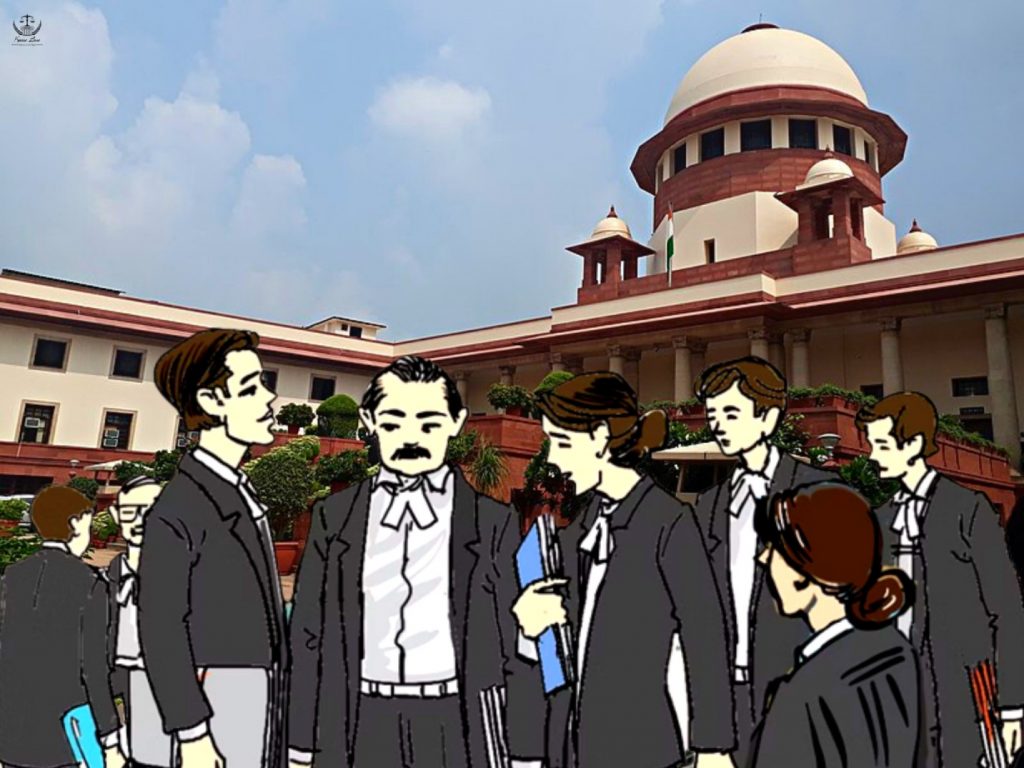
Let’s say John & Co., a popular packaged food brand invents two recipes that may give a competitive advantage and can increase its profits and expand its market. It does not want its competitors to manufacture the same product and therefore obtains a patent for one of the recipes. Nobody else can make use of it or manufacture a similar product using the recipe. The company then enters into an agreement with a rival company named Jason & Co., agreeing to give the other recipe to them for patenting as long as both benefits from it and gain separate market shares in their respective products. But such an agreement may be disadvantageous to small competitors and is unfair. This is the main conflict between the IPR laws that seek to protect the ideas and inventions of innovators leading to harmful monopolies and anti-competitive practices that the Anti-Trust laws seek to abolish.
But if we look closer, we could observe that both these types of law seek to ensure fair practices in the economy and in this way, they are complementary in nature. Thus, the article aims to understand what is the interplay between these laws and how they help each other while looking at a closer view even if they seem to be at loggerheads from a broader viewpoint.
What are Intellectual Property Rights?

World Trade Organisation defines IPR as “the rights given to persons over the creations of their minds. They usually give the creator an exclusive right over the use of his/her creation for a certain period of time.” It is classified into several types like patents, trademarks, trade secrets, copyrights, etc. Some are:
Copyrights: The authors of literary and artistic works like music, compositions, books, movies, etc., have rights over their works i.e., nobody else can exploit them or put them to use under their name. The author gets a right of exclusive use for a minimum period of either 50 or 60 years after the death of the author. The main purpose of providing copyrights is to encourage creative work. In India, it is governed by the Copyrights Act, of 1957, with its latest amendment being in 2012.
Patents: These are exclusive rights granted to a new invention. A patent owner can decide how by whom or whether their invention can be used by others. In exchange for this right, the owner makes information about the invention in a published patent document. Some of the most famous patents of history were granted for the light bulb; computer, telephone; Bluetooth, etc., In India, the Patents Act, of 1970 governs the issue and regulation of patents.
Trademarks: The signs, designs, colors, patterns, etc., that distinguish the goods and services of one enterprise from the others are protected through trademarks that prohibit their use of them by other companies. It is governed by the Trademarks Act, of 1999 in India.
Industrial Designs: An industrial design constitutes the ornamental or aesthetic aspect of an article. A design may consist of three-dimensional features, such as the shape or surface of an article, or of two-dimensional features, such as patterns, lines, or color. It is governed by the Design Act, 2000, and Design Rules, 2001.
Other IPs are geographical indications (signs used on goods having specific geographical origins and possessing qualities or characteristics attributable to that place of origin) and trade secrets (IP rights on confidential information which may be sold or licensed).
What are the Anti-Trust Laws?

These are legislations made to create healthy and fair competition among firms in the economy, break and restrict monopolies and reduce collusion. They help to prevent unlawful mergers, trade conspiracies, or attempts to form monopolies like the example given above. Large corporations have significant power and control over market practices which they try to misuse to obtain huge unlawful profits. These corporations are generally called trusts, hence the term, anti-trust laws. Forming such laws helps to boost the confidence of consumers in markets and corporations.
For example, Microsoft company was charged with violating anti-trust laws. The company distributed its browser software for free and created several new Microsoft applications which means the users have to download their operating system if they want to access a particular application leading to a loss of market share to its then competitor Netscape. It also made it difficult to run other companies’ software in their systems. The court ruled that the company violated multiple provisions of the antitrust law.
In India, Competition Act, 2002 after an amendment in 2007 governs this area and regulates the following 3 types of conduct: anti-competitive agreements, abuse of a dominant position, and combinations (i.e., mergers, acquisitions, and amalgamations). The Competition Commission of India (CCI) is the enforcement authority.
But, are there any real issues?
The IPR agreements between players in the market may be either horizontal or vertical. Horizontal agreements are entered into by players at the same level in the chain of distribution for example, between manufacturers. Vertical agreements are between players at different levels in the chain of distribution, for example, between manufacturers and distributors. These types of arrangements influence competition practices.
Horizontal Effects
- Patent pooling and Cross licensing – Patent pools are agreements between two or more patent owners to license each other’s patents or third parties’ patents. Such agreements are entered into, in order to enhance efficiency and derive mutual benefit from similar patents. But, sometimes, patent pooling may not be required as the resulting products could effectively compete against each other in the market independently with a little value addition because of the pooling. Even then, such pooling agreements are entered into creating monopolies by dividing regions between the parties. At such times, are competition authorities supposed to not interfere with IPR arrangements or restrict such anti-competitive profit-maximizing monopolistic practices?
- Grantbacks – A grant-back license agreement creates an obligation upon the licensee to license any improvements made in the patent of the original licensor. Such mutual agreements between the original licensor and licensee may have anti-competitive effects if they are rival competitors in R&D or if the licensor has significant market power in a particular technology or innovation market as it could discourage other competitors in the same market from innovating similar technologies.
- Horizontal Acquisitions – In a particular industry, there are two companies owning different patents, here if one company acquires the other company, meaning that now all the patents vest with one single company leading to a monopoly. Such a monopoly would affect future competitors in the market.
Vertical Effects
- Exclusive dealing – In these agreements, a license prevents a licensee from licensing, selling, distributing, or using other competing technologies. For example, McDonald’s sold only coca cola, and no other drinks for a long time since 1955. Such arrangements have adverse effects on healthy competition.
- Reach through Royalty – These are royalties based on total sales of a product whether or not it is made using the licensed technology. For example, a small manufacturer wishes to use licensed technology. But, if he opts to use it, he is discouraged from using other competing technologies and is given a disincentive for doing so. In such cases, if the licensor is highly dominant, looking at competing options may be less possible.
- Tying arrangements – These are agreements stating that the purchaser of one good will purchase another good as a condition of purchasing the first. There must be two products for the seller to tie together. The Microsoft computers case is an example of such arrangements hampering competition.
How has this view changed and modified over the years?

Historically, both these types of law have their roots in English Common Law. Until 1623, the British monarchy granted royal patents to merchants, giving them monopolies on certain sectors of the market. In 1624, the Statute of Monopolies limited the Crown’s power to grant such patents. Later, the Sherman Act was passed by Congress in 1890, making “every contract, combination, . . . or conspiracy, in restraint of trade or commerce among the several States, or with foreign nations . . . illegal.” It also discouraged attempts to monopolize and actual monopolization. Even then, till the turn of the 20th century, the rights of IP holders led to several unpunished anti-trust violations like price fixing. The Supreme Court of the US held that “The general rule is absolute freedom in the use or sale of rights under the patent laws of the United States. The very object of these laws is a monopoly. . .”.
Only during the 1950s and 1960s, the perspective shifted towards ensuring fair practices and preventing misuse of monopolies. After this, IP rights were scrutinized heavily and the rules on granting these rights got stricter. Recently, a further shift has occurred, which says that anti-trust laws are totally not against the IPR principles. In United States vs Grinnell Corp, the difference between acquiring a monopoly as a consequence of superior product or business acumen and a wilful acquisition of it was determined, thus declaring that the anti-trust laws do not restrict all kinds of monopolies completely. This view is increasingly being reflected in the anti-trust laws framed by countries.
What does India’s Anti-Trust Law say?

The provisions of the Competition Act, of 2002 have sufficient space for allowing IP rights. Some enabling provisions are:
- Section 3 – It provides that any enterprise or a group of enterprises cannot enter into agreements on production, distribution, supply, acquisition, etc., that could have an adverse impact on healthy competition.
- Section 3(5)- It creates an exception for anti-trust laws being applied to Ip rights granted under various laws.
Thus, when we read these provisions together, it can be deciphered that the competition law seeks to protect competitors in free markets without affecting their right to protect their creations.
What does the Court say?

In Kingfisher vs Competition Commission of India, the court held that section 3(5) does not limit the IP holder’s rights to sue for infringement of copyright, trademark, patent, etc. the Competition Commission of India (CCI) has the power to deal with all cases that comes before the Competition Board. Thus, the Anti-Trust law doesn’t put a bar on the applicability of other laws.
In Entertainment Network (India) Limited vs Super Cassette Industries Ltd, the SC observed that licensing as a royalty by the copyright owner is not an absolute right. If the patented product is very expensive then it would directly contradict the competition laws, and thus the license would be revoked.
In FICCI Multiplex Association of India vs United Producers Distribution Forum, IP rights are not absolute, but only a statutory right under the Copyright Act, of 1957. Therefore, it cannot be challenged that the market competition hampers the IP rights of the respective holder.
Conclusion
Initially if one looks at this situation, one might think that IPR and anti-trust laws are parallel lines that could never intersect. But on a broader note, one might find that both these laws seek the same thing. Though there are certain contradictions, the laws of many countries are reconciled in such a manner as to incorporate both in an orderly manner. For example, in 2019, the Malaysian government issued the “Guidelines on IPR and Competition Law”, trying to explain the situations when the IPR may violate the principles of competition law. Some players take advantage of the loopholes in anti-trust laws, to exercise a monopoly in the market. But on the whole, while rectifying mistakes, both these laws aim to establish fair practices and ensure that every player receives opportunities that they deserve from small to larger and dominating players.